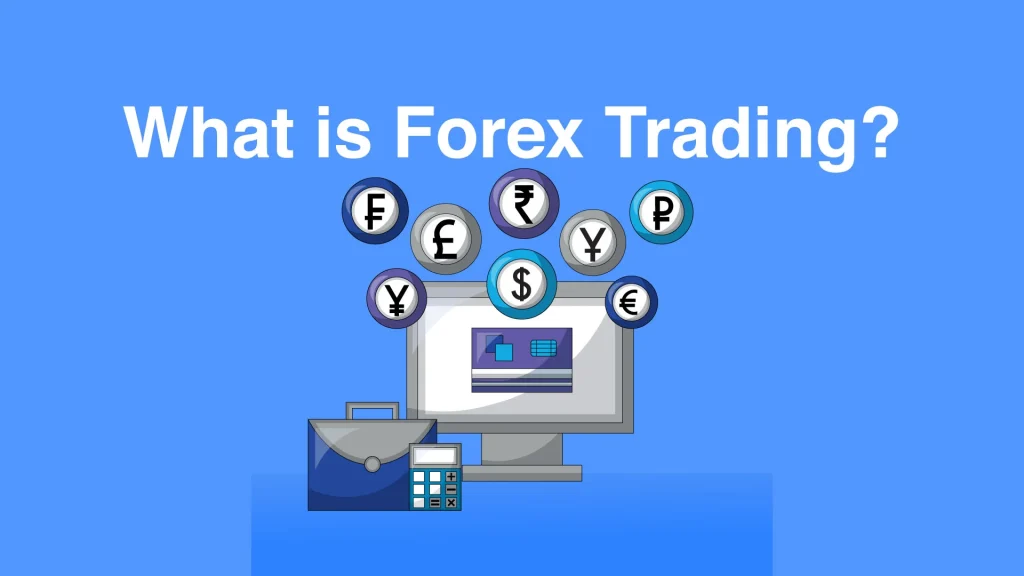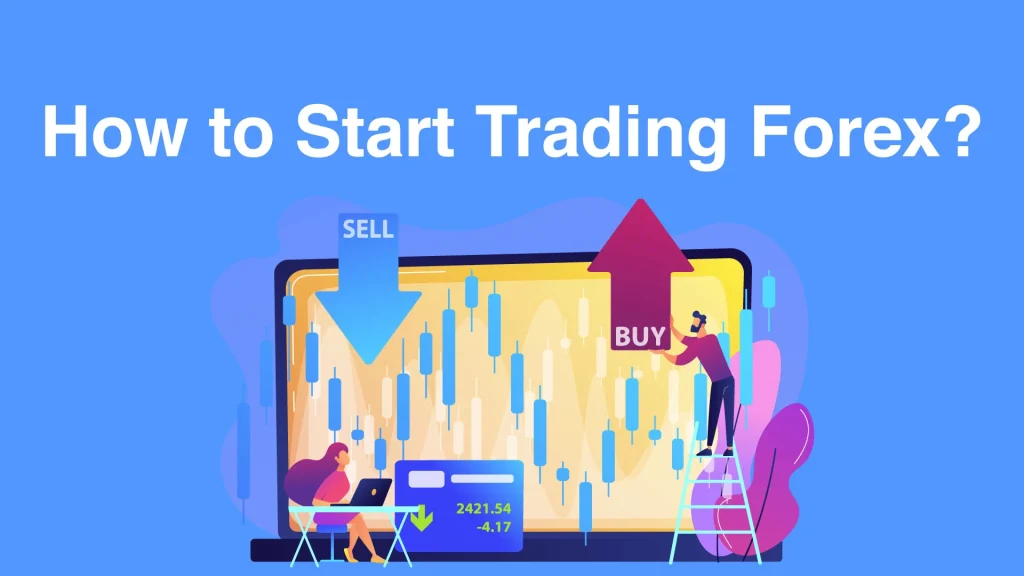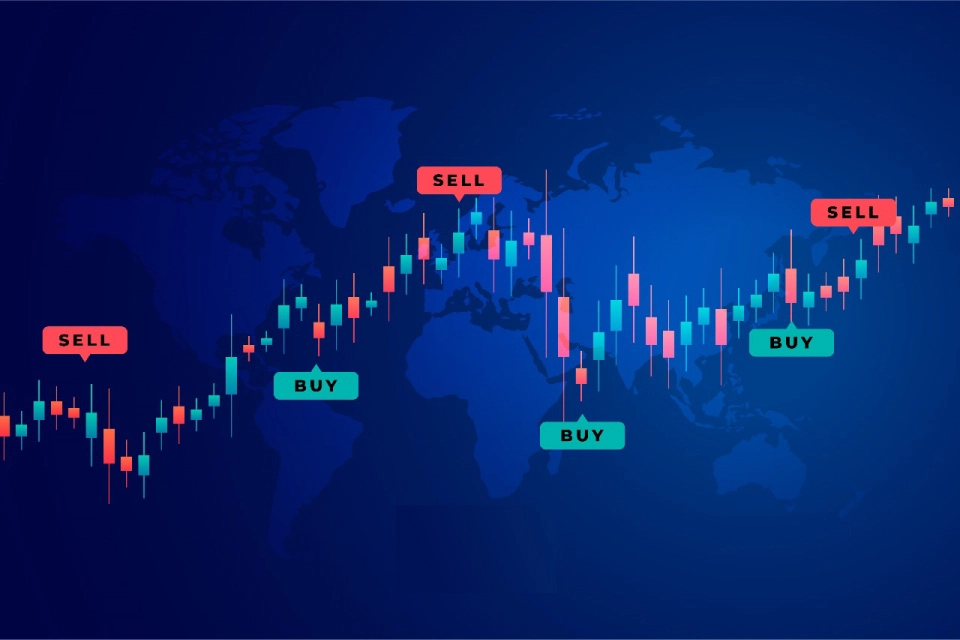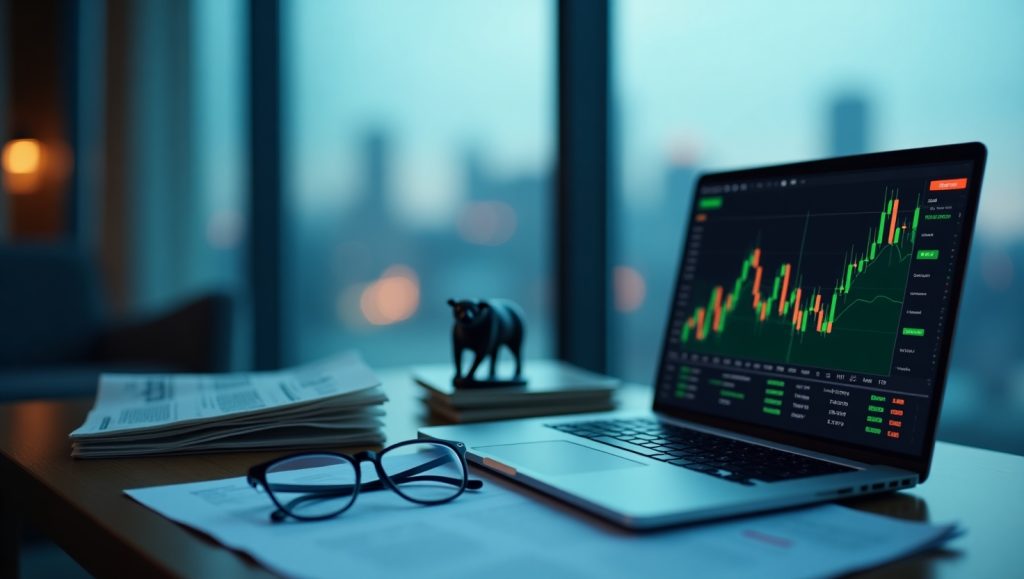Forex trading, or foreign exchange or FX trading, is the global marketplace where currencies are bought and sold. It is the largest financial market in the world, with a daily trading volume exceeding $6 trillion. Whether you’re looking to generate extra income or hoping to build a career, forex trading can offer many opportunities. However, as with any investment opportunity, it comes with risks that should be understood before diving in. This guide will walk you through the fundamentals of forex trading and provide you with the tools and knowledge to get started.
Table of contents
What is Forex Trading?

Forex trading involves the exchange of one currency for another. In simplest terms, when you trade in the forex market, you are buying one currency while simultaneously selling another. For example, if you want to exchange the Euro and the US Dollar (EUR/USD), you are purchasing Euros and selling US Dollars.
Unlike stock trading, the forex market operates 24 hours a day, five days a week, due to the global nature of the market. This allows traders to enter and exit trades at any time, offering increased flexibility.
Key Terms in Forex Trading
Before diving deeper into forex trading, it’s crucial to familiarize yourself with some basic terms:
- Currency Pairs: Currencies are traded in pairs, such as EUR/USD, GBP/USD, or USD/JPY. The first currency is the “base currency,” and the second is the “quote currency.”
- Pip: A pip is the smallest price movement in a currency pair. It is usually equivalent to 0.0001 for most currency pairs.
- Lot: A lot represents the quantity of currency being traded. A standard lot is 100,000 units of the base currency, but there are also mini lots (10,000 units) and micro lots (1,000 units).
- Spread: The spread is the difference between the buying and selling price of a currency pair.
- Leverage: Leverage allows traders to control a larger position than their actual capital. It can amplify both profits and losses.
How Does Forex Trading Work?
Forex trading involves speculating on the value of a currency relative to another. The goal is to predict whether the base currency will appreciate or depreciate compared to the quoted currency.
For example, let’s say you believe the Euro will rise against the US Dollar. You buy the EUR/USD pair, and if the Euro strengthens, you can sell your position for a profit. Conversely, if the Euro weakens, you would sell your position at a loss.
Types of Forex Market Orders
– Market Order: A market order is an order to buy or sell a currency pair at the current market price.
– Limit Order: A limit order allows you to specify the price at which you want to buy or sell a currency pair.
– Stop Loss Order: A stop-loss order helps you limit potential losses by automatically closing your position if the price reaches a certain level.
– Take Profit Order: A take-profit order helps lock in profits when the market reaches a specific price.
How to Start Trading Forex

If you’re new to forex trading, here are the steps to get started:
1. Choose a Forex Broker:
A forex broker acts as an intermediary between you and the forex market. It is important to choose a reputable broker that offers a user-friendly platform, competitive spreads, and robust customer support. Some popular forex brokers include:
– FXCM
2. Interactive Brokers:
When choosing a broker, make sure they are regulated by a reliable authority such as the Financial Conduct Authority (FCA), the U.S. Commodity Futures Trading Commission (CFTC), or the Australian Securities and Investments Commission (ASIC).
3. Open a Trading Account:
Once you’ve selected a broker, you’ll need to open a trading account. You will be required to provide some personal information and verify your identity. Most brokers offer different account types, such as demo accounts (for practice) or live accounts (for real trading).
4. Fund Your Account:
After opening your account, you’ll need to deposit funds to begin trading. Brokers usually offer various payment methods such as bank transfers, credit/debit cards, and e-wallets like PayPal and Skrill. The minimum deposit requirement may vary depending on the broker and account type.
5. Learn Forex Strategies:
Before you start trading with real money, it’s essential to learn forex strategies. There are different types of trading strategies based on timeframes and market analysis, including:
- Day Trading: Buying and selling currencies within the same trading day.
- Swing Trading: Holding trades for several days or weeks to capture short- to medium-term price movements.
- Scalping: Making multiple small trades throughout the day to profit from minor price changes.
- Position Trading: Holding positions for months or years based on long-term trends.
- Start Trading :Once you’re comfortable with your chosen strategy, you can start placing trades. Keep in mind that managing risk is a vital part of trading. Always use proper risk management techniques, such as stop-loss orders, to protect your capital.
Risks and Challenges in Forex Trading
While forex trading can be profitable, it is essential to understand the risks involved:
- Leverage Risk: Leverage can magnify both profits and losses. It’s important to use leverage carefully to avoid significant losses.
- Market Volatility: The forex market is highly volatile, and prices can move quickly. Sudden price movements can lead to losses, particularly for inexperienced traders.
- Psychological Pressure: Forex trading can be stressful, especially when experiencing losses. It is essential to stay disciplined and avoid emotional decision-making.
Tips for Success in Forex Trading:
1. Start Small: Begin with a demo account or trade small amounts to get familiar with the market.
2. Keep Learning: Continuously educate yourself about market trends, economic indicators, and forex strategies.
3. Use Risk Management: Always use stop-loss orders and only risk a small percentage of your account balance on each trade.
4. Stay Informed: Keep an eye on the news and geopolitical events, as they can significantly impact currency movements.
5. Develop a Trading Plan: Having a well-thought-out plan and sticking to it can help reduce emotional trading.
Frequently Asked Questions (FAQ)
1. How much money do I need to start trading forex?
- The amount of money required to start forex trading varies depending on your broker and the type of account you choose. Some brokers allow you to open an account with as little as $50, while others may require a minimum deposit of $100 or more. However, it’s advisable to start with a larger sum to manage risk and gain experience better.
2. Is forex trading risky?
- Yes, forex trading involves a high level of risk, especially with the use of leverage. It is important to understand the risks involved and implement proper risk management strategies to protect your capital.
3. Can I make money trading forex?
- Yes, it is possible to make money trading forex, but it requires knowledge, skill, and experience. Many beginners lose money in forex trading due to a lack of experience, poor strategy, or emotional decision-making.
4. How can I improve my forex trading skills?
- To improve your forex trading skills, consider using a demo account, learning from experienced traders, studying market trends, and practicing different strategies. Additionally, reading books and taking courses on forex trading can help deepen your understanding.
Conclusion
Forex trading offers exciting opportunities, but it’s crucial to approach it with a solid understanding of the market, sound strategies, and effective risk management. By following the steps outlined in this guide, you can build a strong foundation and begin your journey into the world of forex trading with confidence.



